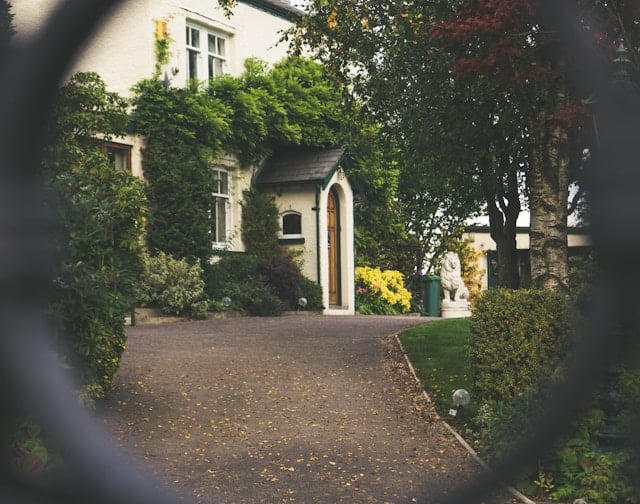In an era dominated by the Internet of Things (IoT), home automation, and smart devices, home is no longer just a physical space but a hub of digital interconnectivity. With the help of giants like Amazon, Google, and numerous other tech companies, our homes are transforming into smart homes. This evolution is not just about convenience or novelty; it’s about improved security, energy efficiency, and lifestyle. But what does it take to build an effective smart home ecosystem in a new residential project? Let’s delve into the best practices and emerging trends.
1. Choosing the Right Smart Home System
Before plunging into the depths of home automation, the first and foremost step is to decide on the right smart home system. Whether you opt for Amazon’s Echo devices powered by Alexa, Google’s Home devices powered by Google Assistant, or any other platform, this decision will serve as the foundation for your smart home ecosystem.
Dans le meme genre : How to Plan for Adequate Water Supply in Real Estate Developments Amidst Changing Weather Patterns?
When evaluating different systems, pay attention to their compatibility with other devices, ease of control, and the robustness of their voice technology. Amazon and Google offer some of the most advanced voice-activated speakers that can control numerous home devices. However, not all devices are created equal. Some may offer better compatibility with certain systems or enhanced features, like energy tracking or advanced security measures.
The best choice for you will depend on your specific needs, preferences, and the other devices you plan to incorporate into your smart home. But remember, the system you choose will serve as the “brain” of your smart home, making it the most critical decision in this process.
A lire en complément : What Are the Financial and Legal Considerations for UK Real Estate Investors Interested in the African Market?
2. Integrating Smart Security Devices
Ensuring security is a paramount concern for any homeowner. With smart technology, you can bolster your home’s security systems to create a safer living environment. From smart locks and security cameras to motion sensors and alarm systems, the options are varied and plentiful.
For instance, Amazon’s Ring doorbell gives you a live video feed of your front door, alerting you to any visitors or potential intruders. Google’s Nest Secure, on the other hand, is a comprehensive security system that includes an alarm, motion sensors, and door/window sensors.
Regardless of the specific devices you choose, ensure they all work seamlessly with your chosen smart home system. This will allow you to control your entire home’s security from one central app, making it easier to monitor and respond to any potential threats.
3. Implementing Energy-Efficient Technology
One of the key advantages of a smart home is its potential for energy efficiency. With the right devices and configurations, you can significantly lower your home’s energy consumption, reducing your utility bills and environmental footprint.
Look for energy efficient smart devices like thermostats, lighting systems, and appliances. Google’s Nest Learning Thermostat, for example, learns your schedule and adjusts the temperature accordingly, reducing wasted energy when no one is home.
In addition to choosing energy-efficient devices, consider implementing energy-monitoring tools. These can provide real-time feedback on your home’s energy usage, helping you identify potential areas for improvement.
4. Ensuring Interoperability of Devices
Interoperability is one of the cornerstones of a highly functional smart home. This refers to the ability of different devices to work together seamlessly, regardless of their manufacturer or specific technology.
Choosing devices that are compatible with your chosen smart home system is crucial. However, this isn’t always enough to ensure complete interoperability. Some devices might use different communication protocols (e.g., Zigbee, Z-Wave, Wi-Fi), making it harder for them to interact with each other.
To avoid this, consider using a smart home hub that supports multiple protocols. These devices act as a “translator”, allowing all your devices to communicate with each other and your smart home system, regardless of their specific protocols.
5. Prioritizing Ease of Use and Control
A smart home is supposed to make your life easier, not more complicated. Therefore, ease of use and control should be a top priority when building your smart home ecosystem.
Look for systems and devices that offer intuitive control, be it through touch, voice, or an easy-to-navigate app. Voice-controlled devices, for instance, can be controlled simply by speaking commands, making them incredibly convenient for daily use.
Integration with an accessible app can also be a game-changer. It allows you to control your smart home remotely, check on its status, and receive alerts on your smartphone or tablet regardless of where you are.
Remember, the aim of a smart home is to simplify and enhance your lifestyle. So prioritize solutions that align with this goal, and you’ll be on your way to building a truly smart, efficient, and secure home.
6. Incorporating Smart Home Technology in Real Estate Projects
Whether you’re a homeowner looking to automate your property or a real estate developer planning a new residential project, incorporating smart home technology from the outset can provide significant benefits. By integrating various home automation systems, you can create an advanced and eco-friendly living environment that appeals to tech-savvy buyers.
In the planning phase, consider the type of residents you’ll have and the specific smart home features that would best cater to their needs. For example, families with young children might appreciate advanced security cameras, while a young professional might value energy-efficient appliances and remote control capabilities.
Incorporate smart devices and IoT devices that add value to the property and are likely to appeal to potential buyers or tenants. This could include built-in smart speakers such as Amazon Echo or Google Home, which offer voice-controlled assistance through Alexa or Google Assistant respectively.
Additionally, it is crucial to ensure the smart home technology you integrate is future-proof. This means choosing technologies that are not only relevant now but will continue to be so in the future, with the ability to adapt and evolve as smart home trends progress.
Lastly, remember to make the technology as accessible and user-friendly as possible. The more convenient the home technology, the more appealing the property will be.
7. Conclusion: Building Smart Homes for the Future
The rapid advancement of smart home technology is revolutionizing our lifestyles and redefining the way we live. As we move forward, the integration of these devices into our homes will only become more prevalent.
From the convenience of controlling home devices with our voice to the peace of mind provided by advanced home security systems, the benefits are broad and far-reaching. At the same time, the growing focus on energy efficiency is transforming our homes into eco-friendly spaces that prioritize sustainability.
Building smart homes is more than just installing a few devices – it’s about creating a seamless ecosystem that enhances everyday life. By following the best practices outlined in this article, homeowners and real estate developers can build smart homes that are not only highly functional but also secure, energy-efficient, and future-proof.
Remember that the success of your smart home depends on careful planning, selecting the right system and devices, ensuring their interoperability, and prioritizing ease of use. Once these fundamentals are in place, you’ll be well on your way to embracing the future of home automation.











